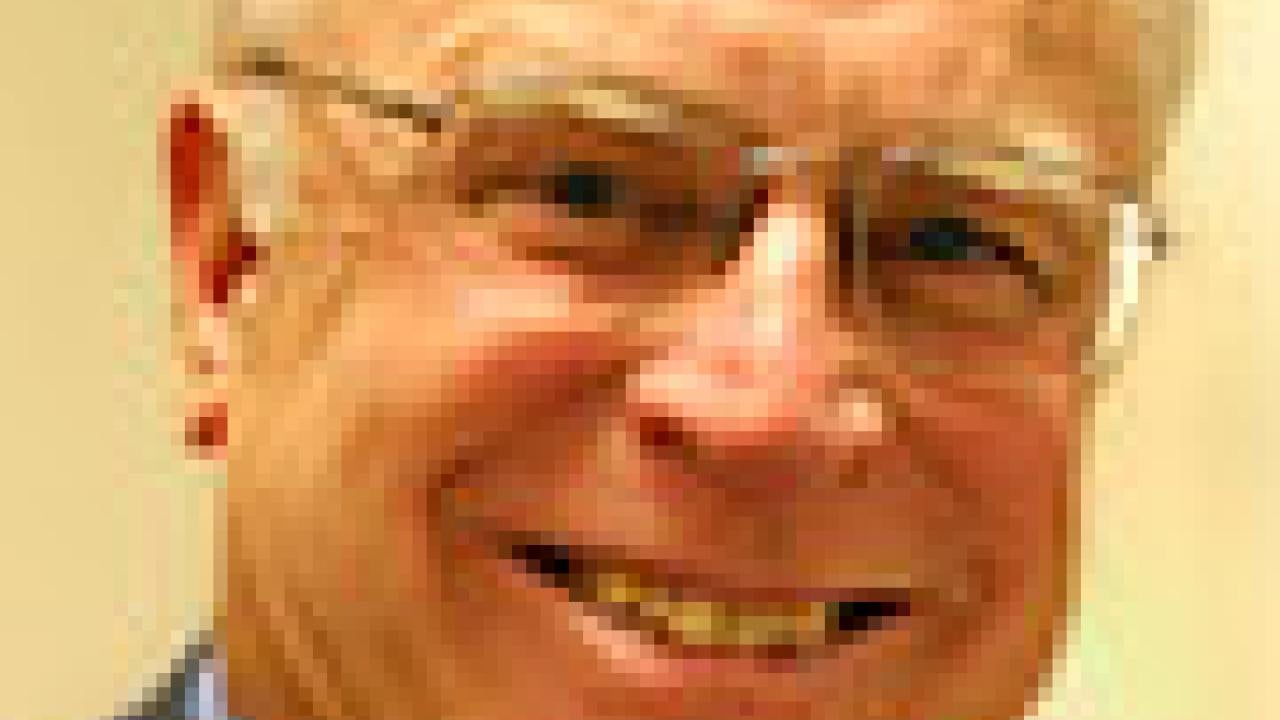Bruce Gates likes things to go fast -- specifically, chemical reactions. Now, the professor of chemical engineering's contributions to the study of catalysis have been recognized with election to the National Academy of Engineering.
"This is a well-deserved honor for Professor Bruce Gates, who has made outstanding contributions to knowledge and practice in catalysis and hydroprocessing," said Enrique Lavernia, dean of the College of Engineering. "He has been recognized nationally and internationally for his innovative research and is a valuable, dynamic member of the UC Davis community of scholars."
The National Academy of Engineering is one of four organizations that make up the National Academies, established by Congress to advise the nation on a wide range of scientific issues. Gates is the eighth current or retired faculty member from UC Davis to be elected to the National Academy of Engineering; the late Robert Fridley, Ray Krone and Roy Bainer were also members.
Gates himself could be something of a catalyst. Robert Powell, professor and chair of the Department of Chemical Engineering and Materials Science, praised his commitment to service and teaching, alongside his research program.
"Bruce has a tremendous sense of commitment to the campus," Powell said, noting the campuswide committees Gates had served on, in areas such as academic personnel and administration. In teaching activities, Gates and Powell recently developed and launched a new freshman course in chemical engineering analysis.
Gates' research lab tries to understand how catalysts work, and tries to make new, better ones. A catalyst is anything that makes a chemical reaction run faster, without itself being consumed. They do not change the chemical equilibrium, but they do change how quickly that equilibrium is reached.
"Nature does it, the chemical industry does it," Gates said. "A catalyst is the most subtle and effective way to control a chemical reaction."
The alchemists dreamed of a Philosopher's Stone that would turn base metal into gold. Real catalysts cannot make such transmutations happen. But they can turn crude oil into plastics, or clean up auto exhaust fumes, or convert rice straw into ethanol. All living things depend on near-perfect biological catalysts -- enzymes -- and most of the chemical industry relies on them, too.
In his lab, Gates tries to build synthetic catalysts, for example a pyramid of four or six iridium atoms, and attach them to a solid surface. That means that when a reaction is done, you can wash away the products and use the catalyst again.
"We're translating chemistry from solutions on to the surfaces of solids," he said. But in the process, the chemistry can change because of interactions with the surface. Gates' research group uses a range of tools to study and understand these novel surfaces. The group was an early pioneer in an area that is now becoming more popular, Gates said.
Gates got interested in catalysis as an undergraduate at UC Berkeley, when he took a course on chemical reactions and catalysis as part of his major in chemical engineering. A spell of undergraduate research led to grad school, and "at that point, I was hooked," he said.
Gates then won a Fulbright scholarship to study at the University of Munich in 1966-67, and he has returned several times as a visiting professor. In Germany, he was working with chemists, an experience he says was influential in establishing his "science base."
The combination of fundamental science and a hugely important technology appealed to Gates. All academic engineers combine a basic science base with a technological, applied outlook, he said.
"I like to do science and I like to do practical things," he said.
Returning to the U.S., he worked for Chevron for two years before taking up a position as assistant professor at the University of Delaware, where he stayed for more than 20 years. While there, he made important contributions to hydroprocessing, a technique used in oil refineries to remove contaminants from fuel. From 1981 to 1988 he was director of the Center for Catalytic Science and Technology, a collaboration between the University of Delaware and industry.
In 1992 Gates, a California native, was recruited back to join the Department of Chemical Engineering -- later merged with the Division of Materials Science -- at UC Davis, where another kind of chemistry seems to be at work.
"Lots of good things have happened in this department in the past few years," Gates said. "I saw the right kind of people and the opportunity to get better. This department is just exploding."
The department, in fact, finds itself aligned with many of the major initiatives undertaken by the university, whether in nanotechnology, such as Gates' work on extremely small structures as catalysts, computational science, foods for health or energy research, Powell said. That means the department has been able to make or share in strong hires in topical areas and establish collaborations across the campus.
Catalysis is "absolutely crucial" to energy research and the energy industry, Powell said, whether the aim is the development of clean technologies, new methods for refining crude oil or converting biological material to fuel.
Gates also traced a link back to Professor Emeritus Joe Mauk Smith, one of the founders of the chemical engineering department at UC Davis and an expert on catalysis, who was elected to the National Academy of Engineering in 1975.
Beyond the department, Gates said how much he appreciated all the people he had got to know and work with across campus, through collaborations, committee work or other interactions.
"Collegiality really matters a lot at UC Davis, and that's why I enjoy it here so much," he said.
Media Resources
Andy Fell, Research news (emphasis: biological and physical sciences, and engineering), 530-752-4533, ahfell@ucdavis.edu
Bruce Gates, Chemical Engineering and Materials Science, (530) 752-3953, bcgates@ucdavis.edu
